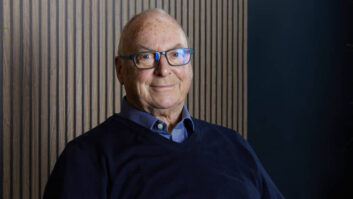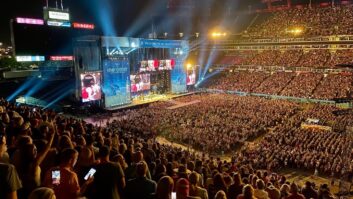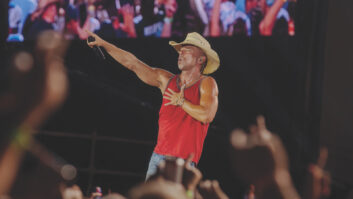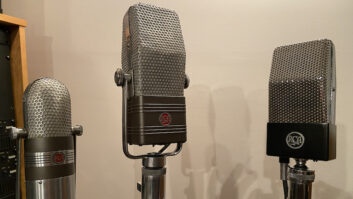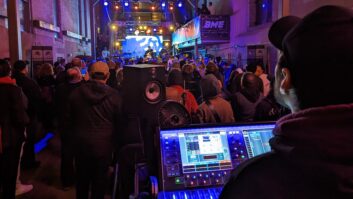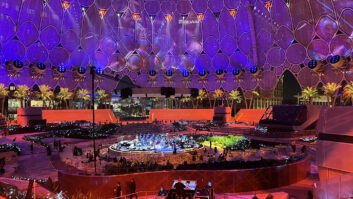
How did you get started in audio?
I started out at 18 as a roadie. My principal qualification was having a driving license. I created a small fleet of vans and was driving bands all over Europe. At 21, I was working with a band called Soft Machine. After working almost exclusively with them for about a year, I needed a change of music and spoke to veteran P.A. builder Charlie Watkins. His WEM P.A. systems were ubiquitous in the UK—everybody from the Rolling Stones to you-name-it was using them. Charlie got me an interview with Led Zeppelin. I did front of house for them in 1970. There were no monitors, so I just turned a couple of speakers toward the stage like sidefills so the bandmembers could hear themselves.
I was using two 5-channel WEM mixers slaved together and 10 mics. We used different systems every night—Voice of the Theater systems, early Community Light & Sound stuff. But the Forum in Los Angeles had a flying system, which I had never seen before. It was built for McCune Audio by John Meyer—before he had his own company. That was the best-sounding system of the entire tour.
Seeing this huge opportunity, I went back to England and wanted to build sound systems. I worked for Hiwatt for a year, and in 1971 I started RSD, my own company, with another guy and Graham Blythe. A few months later, we founded Soundcraft to produce mixers. There were no proper [live sound] mixers at the time, which [was what] inspired me. In 1974, I found somebody with some spare booth space at NAMM. I showed a 16-channel mixer in an aluminum flight case and started selling mixers to Americans.
Why did you leave Soundcraft and buy Focusrite?
In 1988, our distributors, Harman, approached us about selling Soundcraft. I wasn’t enthusiastic about it, but my partners were enthused so I went with the flow. In hindsight, I would have liked to continue running Soundcraft, but after 15 years of that I relished the opportunity to do something different. I thought I would change direction, but I jumped into the audio business created by the failure of Rupert Neve’s original Focusrite business. It endeavored to do great things, but it was a small business trying to do things without the financial resources that Rupert had when he had a big business.
Did Focusrite’s large-format Forté console have a lot to do with that situation?
The console product essentially killed the original company. It was very ambitious and they were taking deposits and using those to pay for the development of the console. It was a sad story—really one of business management naiveté. It was a monumental undertaking. We established the new Focusrite Engineering in 1989. Right after we bought the assets of the company, Rupert left the company, although he was very helpful during the transition. I would have enjoyed working with him.
We’ve grown progressively and re-invented ourselves a couple times during the past 21 years. After we acquired the business, we developed our own console—the one that’s still at Ocean Way was derived not from the Forté, but around the original ISA 110 mic pre/EQ module that Rupert designed. Back in the early ’90s, when Neve and SSL were battling it out with well-developed brands, we got caught in the crossfire in a declining market so we got out of consoles and concentrated on analog outboard gear.
Introducing the Red Range 16 years ago really changed the face of studio racks—from being black and silver to suddenly being bright red. Everything before that was purely functional rather than decorative, and Richard Salter—who designed the range—had a great inspiration. Later, Digidesign asked us to model the Red Range as plug-ins, and Richard had the bright idea of making the plug-in look like the hardware. It hadn’t been done before, but now everybody does that.
What’s new with Focusrite?
Part of our success comes from anticipating market demands for a changing world. We’ve become Focusrite the interface company and there’s some exciting stuff coming along this year. Meanwhile, the advent of Pro Tools 9 has opened a huge market for us. Six years ago, we bought Novation and we’ll be developing more products based on the successful UltraNova synth engine. We grew over 50 percent in the past 12 months, which is extraordinary in this economy and opening our own subsidiary in the States has helped us a lot. We have a great team and all the credit goes to them.

